Hull shape explained
The following information can be generalised to apply to both open canoes and kayaks.
Images taken from ‘Canoecraft’
The perfect boat!?
Essentially it is important to recognise that any canoe can be used for a range of different conditions and situations… it may simply require more effort or skill to get the boat to do as the paddler wants. This means that we do not need a different canoe for every type of paddling we do, but we will benefit from developing our paddling skills and our understanding of how our boat reacts to different conditions.
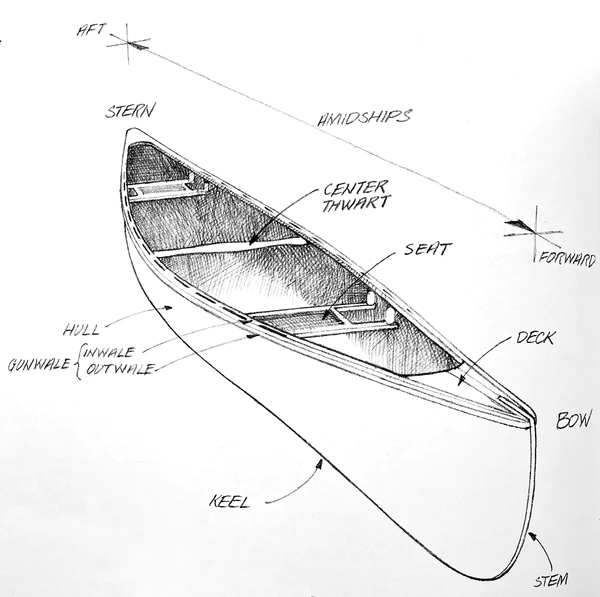
Both Canadian/open canoes and kayaks are combinations of a number of design factors that produce specific effects on the boat’s performance. Generally speaking, the longer the boat and the more pronounced its keel line, the straighter the boat will run through the water. On the other hand, the shorter the boat and the rounder its hull, the more manoeuvrable it will be.
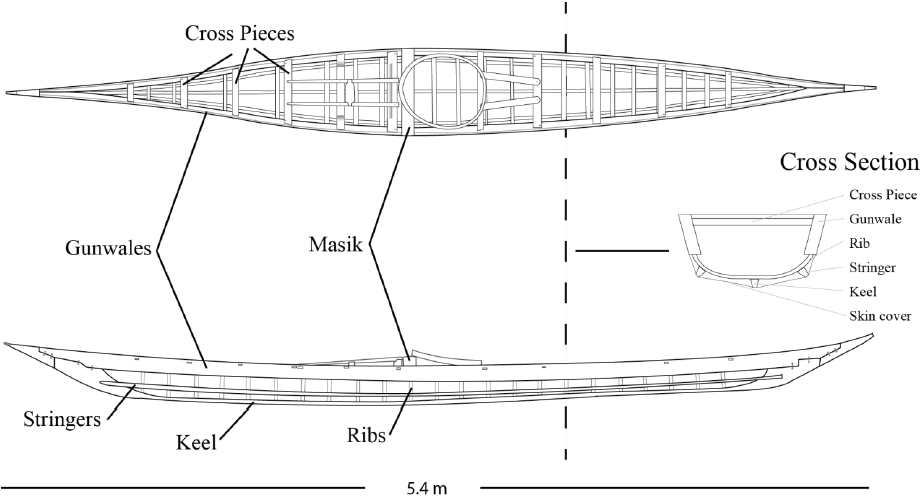
This means every boat is a compromise between the factors of hull cross section, keel line, rocker, stem profile, plan view and stem profile
The following information should provide some useful points on choosing the boat that best suits your intended use.
Hull cross-section – Flat bottomed or round bottomed
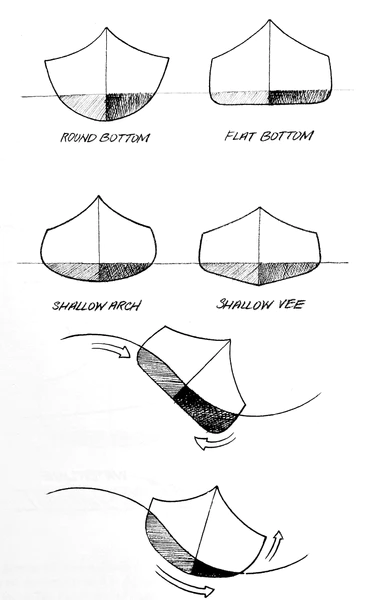
Hull shape has a great deal to do with the choice of stability and capacity against speed. A flat bottomed boat will be more stable and have more storage room but will be slower through the water. A boat with a very rounded hull will be much more ‘tippy’ but will be a faster boat. Most people find a rounded hull unnerving to begin with but a little experience quickly accustoms them to the feel of the boat’s movement. Valkyrie canoes models vary in the degree of hull curvature but none of them are flat bottomed. Details are provided in the description of each boat.
Rocker
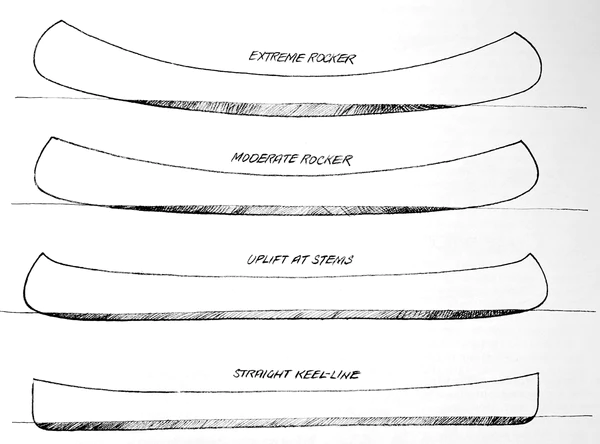
The boat profile from bow to stern. The best way to think of rocker is to imagine going to one end of the canoe and pushing down. A boat with pronounced rocker will rock, one without rocker will not move at all.
The degree of rocker in a canoe has a direct impact on the boat’s ability to change direct and to spin on the water. The greater the rocker the more the boat will respond to a paddler’s efforts (or mistakes) to change direction. Too much rocker turns the boat into a spinning top (useful in rapids where fast boat responsiveness is required) and too little turns the boat into a log. A novice will struggle to control a boat with too much rocker as they fight to go in a straight line, whilst an experienced paddler will lament paddling an unresponsive tub if they find themselves in a boat with no rocker. Our canoes vary in degree of rocker but all of our designs have been chosen to ensure good manoeuvrability.
Stem profile and Plan view
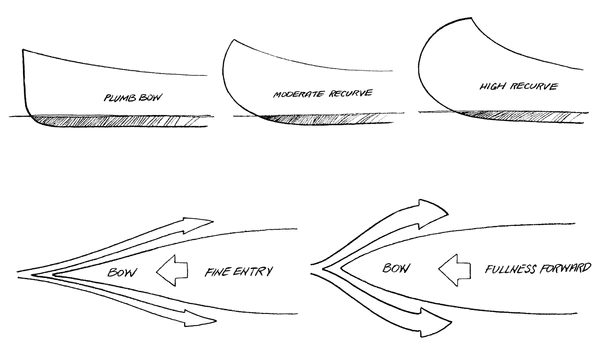
The stems of the boat are the bow and stern sections. When most people think of the classic native American Indian canoes they visualise boats with very high sweeping stems. A pronounced stem profile can look lovely, but in the wind it can act like a sail, blowing the nose or tail of the boat off course. Generally, the lower the profile, the more comfortable the canoe is to paddle in most conditions. A canoe with a high stem profile can not only be irritating to paddle in a cross wind, it can be unmanageable. In general Valkyrie canoes have low profiles but all models can be adapted to increase the height of the prows if desired.
Plan View. This is the shape of the boat looking down on it from above. A boat that is thin with minimal swell in its centre section will be a fast boat but will have no room for storing gear or carrying passengers. A canoe with broad ends and a wide central section will be a slower boat but will carry all you need for an extended camping trip or additional passenger
Keel
A pronounced ridge along the very bottom line of the underneath of the hull running from bow to stern.
A keel on a canoe has the advantage of helping the boat to run straight through the water which can be useful for a novice paddler when trying to make the boat go in one direction with basic paddling skills, or to racers on a straight course. It has the major disadvantage of making the boat hard to manoeuvre and adding depth to the boat, both of which make the boat difficult to use on moving water and a major problem with handling in white water. For this reason keels are not common on canoes and none of our canoes have them.




